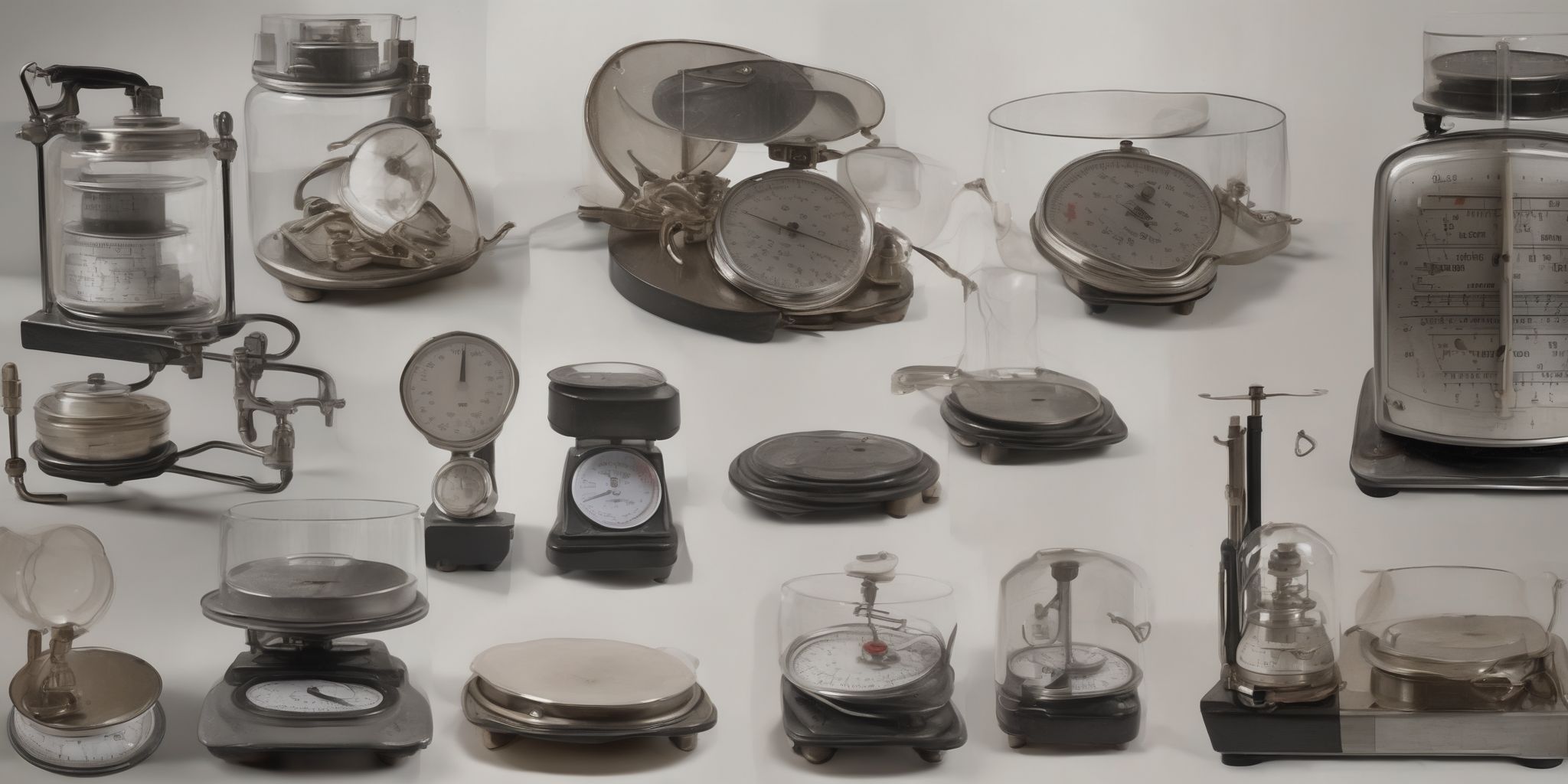Maximize Your Savings: Tax Deductions for Energy-efficient Home Improvements
Welcome to the world of energy efficiency! In a time when saving both the planet and your hard-earned cash has become a top priority, upgrading your home with energy-efficient improvements has never been more important. Not only do these upgrades reduce your carbon footprint, but they also make a significant dent in your energy expenses.
And here's the cherry on top: the government is willing to give you a little nudge in the right direction by offering tax deductions for energy-efficient home improvements. Yup, you heard that right! So, grab your toolbelt, as we delve into the wonderful world of maximizing your savings through tax deductions for energy-efficient enhancements.
Overview of Tax Deductions for Energy-efficient Home Improvements
Tax deductions for energy-efficient home improvements provide financial incentives to individuals who make qualifying upgrades to their homes. These deductions can help homeowners reduce their tax liability while encouraging energy conservation. Federal tax incentives, such as the Residential Energy Efficiency Property Credit and the Non-business Energy Property Credit, offer opportunities for savings.
Additionally, state and local governments may provide their own tax incentives for energy-efficient improvements. For instance, California's Residential Energy Efficiency Rebate Program offers rebates to homeowners who install eligible energy-saving equipment. By taking advantage of these deductions, homeowners can save money and contribute to a more sustainable future.
Benefits of Energy-efficient Home Improvements
- Lower Energy Bills: Energy-efficient improvements can significantly reduce your monthly energy costs by reducing the amount of energy needed to heat, cool, and power your home.
- Increased Home Value: Investing in energy-efficient upgrades can increase the value of your home. Buyers are often willing to pay more for homes with energy-efficient features.
- Enhanced Comfort: Improvements like insulation and weatherization can help maintain a comfortable temperature in your home year-round, minimizing drafts and uneven temperatures.
- Environmental Impact: Energy-efficient upgrades reduce greenhouse gas emissions and help combat climate change by conserving energy.
- Long-term Savings: While the upfront costs of energy-efficient improvements may seem higher, the long-term savings on energy bills can outweigh the initial investment.
Qualifying for Tax Deductions Energy-efficient Home Improvements
Federal Tax Incentives
Federal tax incentives provide valuable benefits for homeowners who make energy-efficient home improvements. These incentives help offset the costs of upgrades and encourage the adoption of eco-friendly practices. One example is the Residential Energy Efficiency Property Credit, which offers a tax credit for qualified expenses related to solar panels, wind turbines, and geothermal heat pumps.
Additionally, the Non-business Energy Property Credit provides tax credits for eligible energy-saving improvements such as insulation, energy-efficient windows, and efficient HVAC systems. These incentives can significantly reduce the overall cost of energy-efficient upgrades and make them more accessible for homeowners. By taking advantage of these federal tax incentives, homeowners can maximize their savings while making their homes more energy-efficient.
Residential Energy Efficiency Property Credit
- The Residential Energy Efficiency Property Credit is a valuable tax deduction for homeowners who make energy-efficient improvements to their homes.
- This credit allows you to claim a percentage (typically 10%) of the cost of eligible energy-efficient equipment and upgrades installed in your primary residence.
- Examples of qualifying improvements include solar panels, geothermal heat pumps, wind turbines, and solar-powered water heaters.
- It's important to note that there is a maximum credit limit, which varies depending on the specific improvement.
- To claim this deduction, you'll need to file IRS Form 5695 along with your tax return and provide documentation of the improvements made.
- Taking advantage of the Residential Energy Efficiency Property Credit can help you save money while reducing your carbon footprint.
Non-business Energy Property Credit
- The Non-business Energy Property Credit is a valuable tax deduction for homeowners who make certain energy-efficient improvements to their homes.
- Under this credit, eligible improvements include installing energy-efficient windows, doors, insulation, and HVAC systems.
- Homeowners can claim a credit of up to 10% of the cost of these improvements, up to a maximum credit amount.
- For example, if you spent $5,000 on new windows and $3,000 on insulation, you could potentially claim a credit of $800 (10% of $8,000).
- It's important to keep records of the expenses, including receipts and manufacturer certifications, as documentation is necessary when claiming the credit on your tax return.
- Take advantage of the Non-business Energy Property Credit to maximize your tax savings while making energy-efficient upgrades to your home.
State and Local Tax Incentives
State and local tax incentives also play a significant role in promoting energy-efficient home improvements. These incentives vary from state to state but can include rebates, tax credits, or grants.
Here are some examples:
- California offers the Residential Energy Efficiency Rebate Program, providing financial incentives for energy-efficient upgrades.
- New York provides tax credits for renewable energy systems and energy-efficient appliances.
- Massachusetts offers rebates for residential solar installations.
By researching and understanding the specific incentives available in your state or local area, you can take advantage of additional savings while making energy-efficient improvements to your home. Be sure to check with your state or local government websites or consult with a professional to maximize the tax deductions and incentives available to you.
Example: California's Residential Energy Efficiency Rebate Program
California's Residential Energy Efficiency Rebate Program is a valuable opportunity for homeowners looking to make energy-efficient improvements. Through this program, California residents can receive incentives and rebates for upgrading their homes with energy-efficient features such as solar panels, insulation, and HVAC systems. For instance, homeowners who install solar panels may be eligible for a rebate based on the system's capacity.
Additionally, participating in this program can not only lower your energy bills but also reduce your environmental impact. By taking advantage of California's rebate program, you can maximize your savings while making your home more energy-efficient.
Making Energy-efficient Home Improvements
Energy-efficient Windows and Doors
Installing energy-efficient windows and doors in your home can make a significant impact on your energy consumption and savings. These improvements can help to reduce heat loss and gain, resulting in lower heating and cooling costs throughout the year. Energy-efficient windows and doors are designed with advanced features such as double or triple glazing, low-emissivity coatings, and insulated frames to improve thermal efficiency.
By upgrading to these energy-efficient options, you can qualify for tax deductions.
For example, the Residential Energy Efficiency Property Credit allows you to claim a percentage of the cost of qualified windows and doors as a tax credit. Make sure to consult with a tax professional and keep all documentation for your purchases to take full advantage of the available deductions.
Insulation and Weatherization
Insulation and weatherization are important aspects of energy-efficient home improvements that can qualify for tax deductions. By adequately insulating your home, you can reduce heat transfer, decreasing the amount of energy required to heat or cool your home. Common insulation materials include fiberglass, cellulose, and spray foam. Weatherization focuses on sealing gaps and cracks to prevent air leakage, improving energy efficiency.
Simple weatherization measures include weatherstripping doors and windows, sealing ducts, and adding insulation to attics and crawl spaces. These improvements not only save energy but also enhance comfort and reduce utility bills.
High-efficiency Heating and Cooling Systems
High-efficiency heating and cooling systems offer significant energy savings and qualify for tax deductions. By upgrading to these systems, homeowners can reduce their energy consumption and lower their utility bills. These systems utilize advanced technologies to maximize efficiency and minimize energy waste.
For example, installing a high-efficiency furnace or air conditioner can save up to 20% on heating and cooling costs. These systems often feature programmable thermostats and variable-speed motors, allowing homeowners to customize their comfort levels while reducing energy usage.
To qualify for tax deductions, homeowners should ensure that the heating and cooling systems meet the required energy-efficiency standards set by the government. Consulting with a qualified HVAC professional can help homeowners choose the right system and navigate the documentation process for claiming tax deductions.
Upgrading to high-efficiency heating and cooling systems not only saves energy and money but also contributes to a greener and more sustainable future.
Solar Panels and Renewable Energy Systems
- Installing solar panels and other renewable energy systems in your home not only reduces your carbon footprint but can also result in significant tax deductions.
- By utilizing solar power or other renewable energy sources, you can qualify for federal tax incentives, such as the Residential Energy Efficiency Property Credit.
- These tax deductions can offset a portion of the costs associated with purchasing and installing solar panels or renewable energy systems.
- Additionally, some states and local governments offer their own tax incentives and rebates for energy-efficient home improvements, including solar panels.
- It is important to properly document the installation and costs of your solar panels to claim the tax deductions accurately. Keep invoices, receipts, and any necessary certifications or documentation.
- By investing in solar panels and renewable energy systems, you not only save on energy bills but also maximize your tax deductions, making it a financially sound decision for environmentally-conscious homeowners.
Claiming Tax Deductions Energy-efficient Home Improvements
Documenting Your Improvements
To ensure you can claim tax deductions for your energy-efficient home improvements, it is important to keep thorough documentation. Keep copies of all receipts, contracts, and invoices related to the improvement projects. This includes materials, labor costs, and any inspections or certifications obtained.
Additionally, take before and after photos to demonstrate the changes made. If you installed energy-efficient windows, for example, keep the window manufacturer's specifications and energy performance ratings. These documents will serve as evidence to support your claims and maximize your potential tax savings. By maintaining organized records, you can confidently navigate the tax filing process and substantiate your eligibility for deductions.
Filing Your Tax Return
- Report your energy-efficient home improvements on IRS Form 5695.
- Keep a record of receipts, invoices, and any manufacturer certifications for the energy-efficient products you installed.
- Calculate the tax credits you're eligible for based on the cost of your qualified improvements.
- Enter the total tax credit amount on the appropriate line of your tax return.
- Double-check your entries and ensure accuracy to avoid any potential audit triggers.
- File your tax return electronically for faster processing.
- Consult a tax professional if you have any doubts or specific questions about claiming deductions for energy-efficient home improvements.
Conclusion
Discover how you can maximize your savings through tax deductions when making energy-efficient home improvements. This article provides valuable insights and tips on how to take advantage of tax incentives by making eco-friendly upgrades to your home. By carefully following the guidelines and restrictions set by the government, you can potentially save money while contributing to a greener future.


